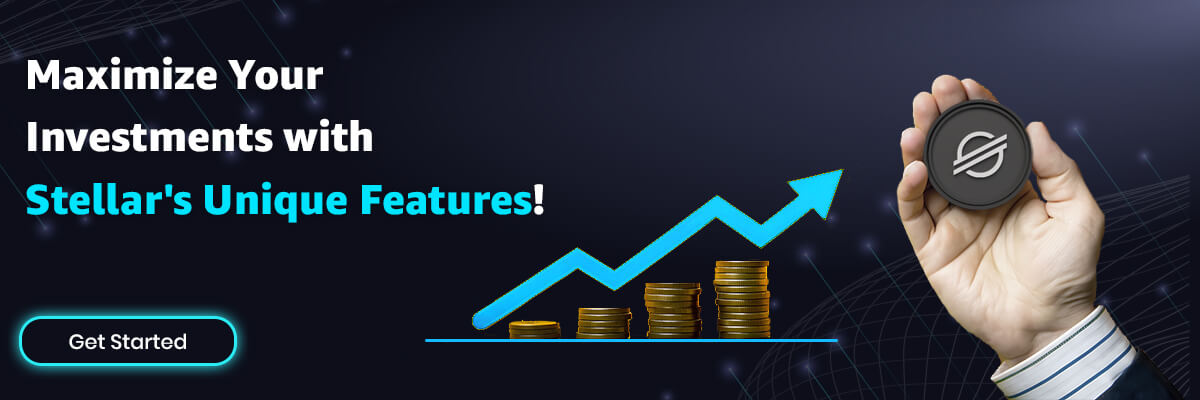Finding a trading or exchange platform for all types of currencies, from conventional fiat currencies to digital tokens, is quite impossible. That’s because most decentralized platforms prefer to focus on a specific currency type, thereby limiting the options for traders and investors. Also, they have to switch back and forth between diverse platforms to utilize their assets properly and make the best out of the crypto and fiat worlds. Stellar blockchain was launched in the market to resolve these problems and expand the trading horizons for investors.
Considered to be a much faster platform, it is backed by decentralized blockchain technology and extends all the DeFi features to traders and investors. Even though it opens a sea of opportunities, not everyone is aware of this groundbreaking platform, let alone its operations, consensus protocol, and other attributes. As a result, they fail to make the best out of all the currencies and get higher returns on their investments. So, in this following discussion, we have presented a detailed guide on Stellar, its blockchain technology, operations, and other related facts that traders should know beforehand.
What is Stellar? A Comprehensive Overview of the Stellar Network
Stellar is a decentralized platform for exchanging different types of currencies, including fiat currency pairs and crypto tokens on a fast and highly secured network. Anyone with a Stellar address can join the exchange platform and easily send the currencies or initiate a trade based on their convenience. Since it is based on DeFi technology, no central authority is involved in governance and operational control, thereby providing traders to complete transactions at lightning speed.
To understand its operation, you must know about the Stellar network. There are three different sub-networks, each having a dedicated function. These are:
- Futurenet: This is the development network used by tech-savvy professionals to add new features to the blockchain or the exchange platform and modify the existing features.
- Testnet: Before the final deployment of any developed feature, it is tested on the Testnet network where virtual currencies are used for the transactions.
- Mainnet: This is the public network that runs on the production environment and is available for real-time users for trading or investing in different forms of currencies on a decentralized blockchain.
Lumens (XLM): Stellar’s Personal Crypto Token
One of the striking Stellar benefits that traders and investors can leverage is the built-in native currency of the network, known as XLM or Lumens. All the tokens existing at the present time have been created at the same time when Stellar network went live. No mining protocol is used to create new tokens and release them to the blockchain network for trading. Lumens offer impeccable benefits to all traders and investors involved with the Stellar network, including:
- Transaction fees needed on the Stellar network can be paid through the Lumens, thereby reducing the dependencies on other currencies and incurring a higher fee rate after conversion.
- All Stellar accounts need to maintain a minimum value to ensure they remain operational and active. Usually, every account needs to have two base reserves, which equates to 1 XLM.
- Also, smart contract data entries on the ledger require traders and investors to pay the rental charges through Stellar’s native currency, Lumens.
What Makes Stellar Different From Other Blockchains?
Since there are innumerable blockchains currently active in the DeFi market, it might be concerning for you to invest in a completely new one like Stellar. That’s primarily because you aren’t yet aware about its impeccable benefits that can be harnessed for increasing the returns and trade without any worry. Below, we have highlighted a few ways in which Stellar has become a standpoint in the enormous DeFi market.
- Financial inclusiveness: Most blockchains allow traders and investors to deal with a single or a set of specific cryptocurrencies only. This limits the investment options and often forces users to deal with multiple platforms at a time for different tokens. However, Stellar is a completely different story since it relies on financial inclusion. In other words, it allows users to trade both crypto tokens and fiat currencies on a decentralized platform.
- Faster transactions: Thanks to Stellar’s decentralized feature, no third-party issuance or governing body is involved in verifying the transactions or executing them on behalf of the users. Rather, smart contracts are deployed on the ledger that plays a crucial role in speeding up transaction executions through automated functions.
- Cross-border transactions: One of the major benefits of Stellar is its ability to support and process cross-border payments. It means you can send money or exchange currency pairs with another user from a different geographical location without worrying about cross-border rules and regulations.
- Low transaction fees: Unlike other exchange platforms, Stellar charges a nominal amount on every transaction that’s initiated and completed in its network. On top of this, the transaction fee can be paid using the network’s native currency, Lumens, thereby allowing traders and investors to make maximum profits on their investments.
- End-to-end traceability: All the transactions initiated on Stellar can be tracked, thanks to the enhanced transparency and improved accessibility of the ledger. Hence, the chances of making fraudulent transactions or using counterfeited tokens are minimal on this trendsetting Stellar blockchain.
Stellar Consensus Protocol: The Backbone of The Stellar Network
Stellar’s groundbreaking performance is the result of its built-in Stellar Consensus Protocol. Powered by Federated Byzantine Agreement or FBA, it is much different from the two other main consensus protocols that most blockchains rely on, namely Proof of Work and Proof of Stake. In FBA system, every participating Stellar core node or validator will have the independence to decide which set of nodes they want to trust with the ledger. Since the trust is completely user-defined, it facilitates open-network membership and decentralized control with no central or prime authority governing all the transactions.
While there are no monetary rewards for being a validator node within the Stellar network, users can contribute to maintaining optimal security and resiliency of all the products and services deployed to this blockchain. SCP is primarily defined by three major properties that make it different from other consensus systems.
- Liveness: A participating node can easily provide the output without depending on any misbehaving or malfunctioning node within the network.
- Safety: It is imperative for all the nodes to agree on the same value, ensuring the blocks added to the ledger can have the same state.
- Fault tolerance: If any node fails or malfunctions, the network continues to operate by relying on other validator nodes.
Conclusion
Now that we have illustrated the basic facts about Stellar blockchain, including its benefits and the consensus protocol, you won’t have to worry about not getting higher returns through your investments. Since it comes with so many diverse and innovative features, developers can leverage the underlying technologies, like the SDKs and Horizon API to build wallets, micropayment services, and other financial products on the Stellar global network.





